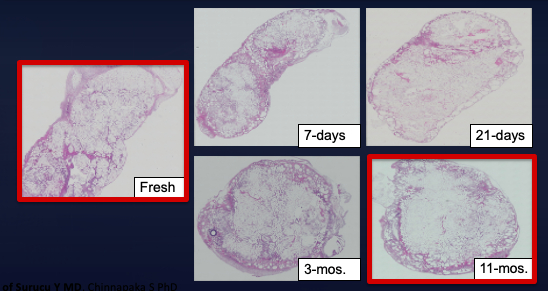Development of an Innovative Device to Enable on-site Cryopreservation of Lipoaspirates to be Used in Repeat Procedures.
Jose A. Arellano*, Yusuf Surucu, Hamid Malekzadeh, Wayne V. Nerone, Zayaan S. Tirmizi, Rakibul Islam, Alexey Altman, Katherine Yang, Peter Rubin, Asim Ejaz
Plastic Surgery, University of Pittsburgh, Pittsburgh, PA
The main challenge of autologous fat transfer procedures in patients is the requirement of repeat grafting to compensate for the resorbed fat over time. On average about 40-50% of the grafted fat resorb in 3-6 months post grafting requiring repeat graft procedure. Repeat harvest is a painful and expensive procedure exerting a traumatic and financial burden on the patient. In this direction, we have designed a cryopreservation device and optimized the protocol that enables on-site storage of the excess harvested fat for repeat graft procedures thus eliminating the need for repeat harvest.
We designed a device that can connect seamlessly to current devices used in fat harvest and grafting. We tested different approaches and methods combinations of cryoprotectant and freezing temperatures, and measured cell viability up to 3 months using viability stains Tryptan blue and Calcin-Am. For in-vivo validation, we used Nu/Nu athymic mice injected with human fat cryopreserved for 7 days, 21 days, 3 months, and 11 months. Each group was compared to a fresh fat graft. We analyzed the graft for weight, volume retention, histology, vacuole formation, and inflammation markers after 9 weeks. Using our method we determined the optimal time range for cryopreserving the fat post-harvest.
In vitro viability analyses showed a combination of 10% DMSO, 2% human serum albumin, and storage temperature of -80 celcius demonstrated optimal viability of cryopreserved fat comparable to fresh fat. In vivo, Nude mice studies showed no significant changes in the graft weight and volume retention between the comparison groups up to 11 months. The histological scoring index for inflammation and vacuole formation also showed no significant changes.
This study shows that the clinical adaptation of our device and protocol can reduce multiple harvest sessions along with the complications of this procedure e.g. ecchymosis, swelling, hematoma, and infections. Fat can be preserved without any morphological, weight, or volume changes for up to 1 year.
Cryopreservation device
Cryopreservation bag and box
Histology omparing fresh fat vs. cryopreserved fat over 12 months
Back to 2023 Abstracts


